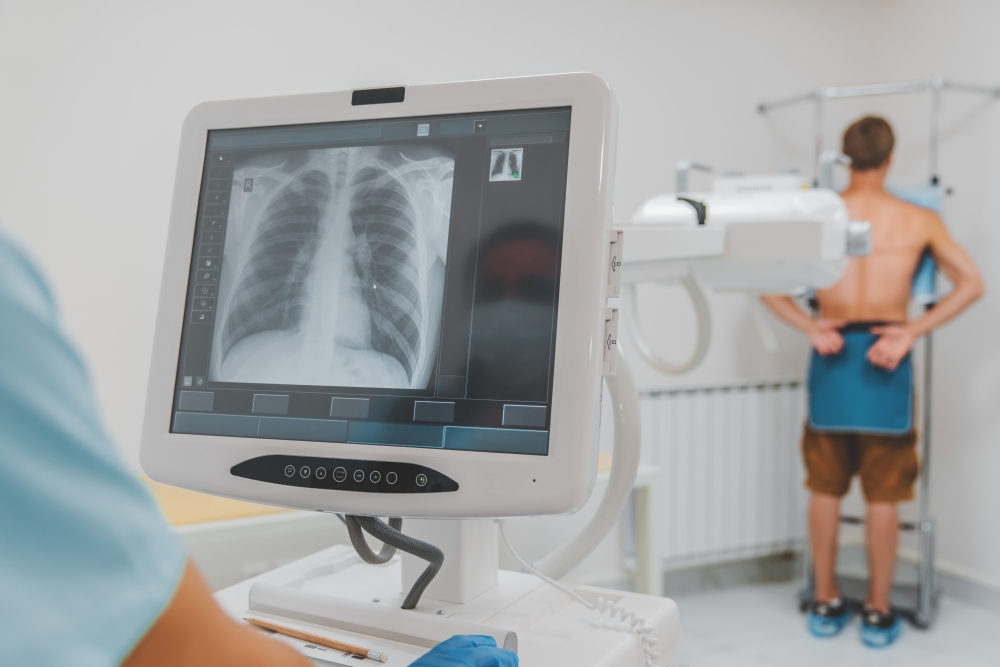Chest X-Ray
Overview
A chest X-ray produces an image of the inside of the chest, showing the bones, heart, and blood vessels. Chest X-rays usually show the chest in two views: from the front and the side.
Although chest X-rays aren’t as sophisticated as some other diagnostic technologies, they provide information that can’t be obtained in a physical exam. For instance, they can be valuable in initially evaluating the following:
- Size of the heart
- Contour of the heart – Enlargement of a particular chamber or blood vessel may suggest heart failure or other abnormal functioning.
- Size of the large blood vessels of the lungs – Enlarged blood vessels may suggest several heart defects or diseases and indicate the need for more sophisticated tests.
A chest X-ray also may demonstrate pulmonary congestion or fluid buildup in heart failure or lung conditions such as chronic obstructive pulmonary disease (COPD) or lung tumors.

How a chest X-ray works
During a chest X-ray, a beam with a small amount of radiation is directed through the chest. The radiation that passes through the body is recorded on film or computer. Tissue, such as the lungs, doesn’t absorb much radiation, and those areas appear darker on the X-ray image. Bones, which absorb much radiation, appear white in the image.